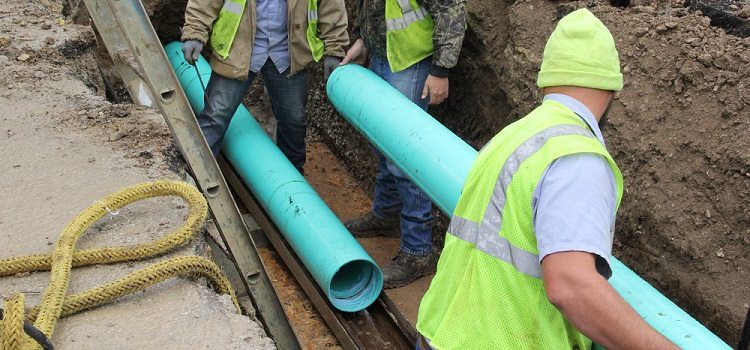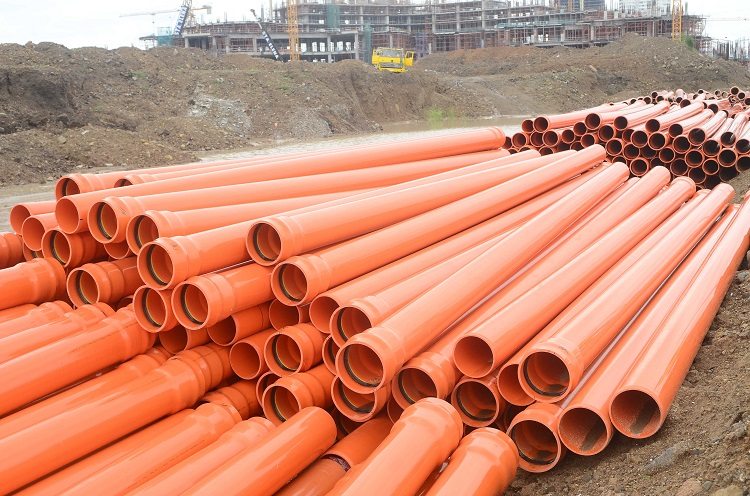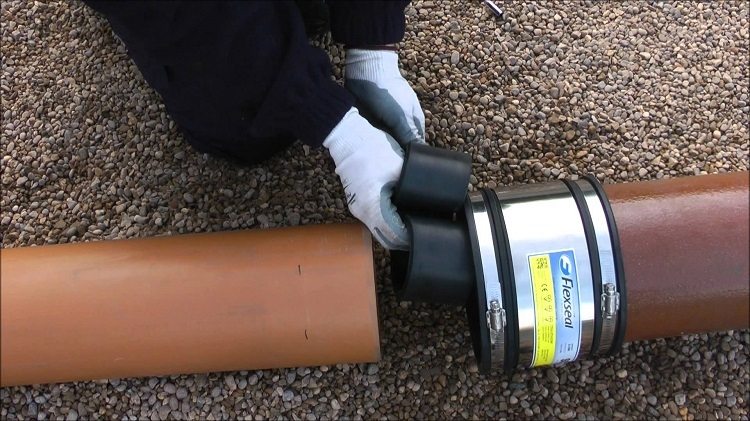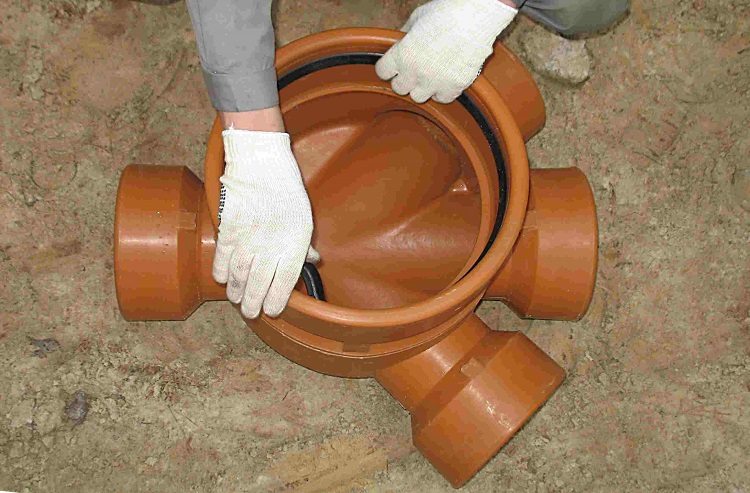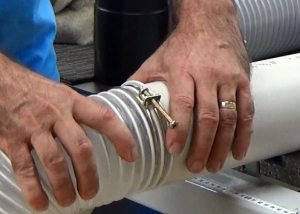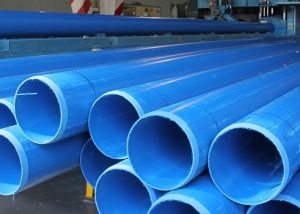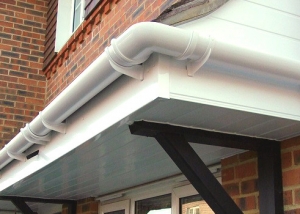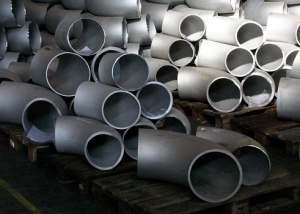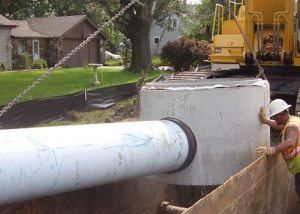Comfortable living in a private house without a stable functioning sewage system is impossible. Therefore, the choice of material is a very serious and responsible matter. Previously, cast-iron pipes were most often used for the construction of sewage disposal networks. However, we live in the 21st century. Therefore, today many property owners and craftsmen prefer PVC sewer pipes.
Content
Hardness classes of PVC products
Polyvinyl chloride is almost ideally suited for the design of systems for the disposal of domestic wastewater. Pipes made from it and plumbing fittings are used both for assembling new and for repairing existing sewer pipelines. Since these products are frost-resistant, they are suitable for laying not only internal but also external networks.
But not so simple. There are various technologies for manufacturing PVC plumbing pipes for sewage. They, in fact, determine the scope of application of these products depending on operating conditions. Polyvinyl chloride pipes designed to create an internal sewage system, as a rule, have lower strength in comparison with products for external networks. The same applies to the type of sewage: pressure or non-pressure. Therefore, before purchasing, you should carefully familiarize yourself with the characteristics of the products intended for purchase.
Helpful information! In the production of PVC pipes for sewage, various dyes are used. This is done so that the consumer can easily choose the right product. For the installation of internal PVC sewage, you need to buy products in light gray. The color of PVC pipes for outdoor sewage is brown-orange.
If you plan to lay an external network, be sure to consider the level of load that will be on the pipe during operation. So, if the pipeline is laid on the terrain with almost complete absence of vehicle traffic, opt for lightweight PVC pipes of the external sewage class SN2.
To purchase PVC pipes of external sewage of the middle class of rigidity (marking SN4) should be with moderate traffic on the site. To create an outdoor PVC sewage system in places where heavy traffic is recorded, it is necessary to choose heavy pipe products of class SN8.
Range of rolled PVC pipe and construction
The diameter and technical characteristics of household sewage pipes made of polyvinyl chloride are determined by BCH 48-96 (for pressure-free versions) and GOST 51613-2000 (with pressure drainage). It should be noted that in the above regulatory documents these products are positioned as water pipes, however, their use in sewer systems is not specified in any way.
The range of non-pressure PVC pipe for domestic sewage is limited to three positions. Their diameters are: 110, 90 and 50 millimeters.
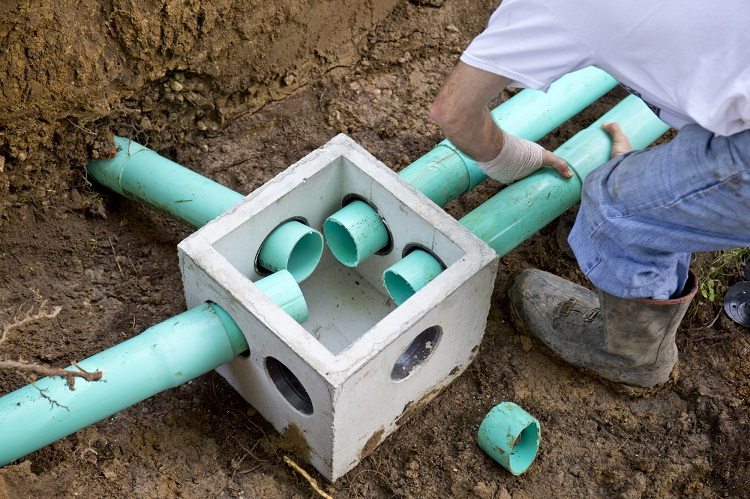
The diameter and type of pipes are selected depending on the type of future sewage and the location of the system
As for the assortment of PVC sewer pipes of pressure type, it is much wider. The size range includes 13 positions from 63 millimeters to 315. However, in the practice of modern construction, a standard set is usually used:
- branch pipes to a septic tank or collector with a diameter of 150-160 millimeters;
- the arrangement of vertical risers is carried out by pipes with a cross section of 100 and 110 millimeters;
- through a pressure PVC sewer pipe with a diameter of 75 millimeters, drains from the bathrooms located in the house are discharged.
The design of the PVC pipe for outdoor sewage is usually a three-layer structure. The outer and inner layers are rigid, unplasticized polyvinyl chloride, and foamed PVC between them. The presence of the middle layer leads to a reduction in the cost of raw materials and production, a decrease in the weight of the final product, without prejudice to its ring stiffness. It should be noted that single-layer products are also on the market.
PVC sewer pipes are connected to the socket using a rubber seal. Such a well-thought-out and tried-and-tested technology for many years ensures simplicity and ease of installation, as well as guarantees a tight connection.
Advice! Joining a PVC pipe for sewage with a pig-iron pipe inherited from the Soviet era is carried out using a special rubber coupling.
Features of working with pressure PVC pipes for sewage and their sizes
PVC pressure pipes are used in systems where drains are forcibly removed by pumps. Since products of this type must withstand high pressure, they are subject to the relevant requirements. The assortment of such pipes provides for their release into three values of this parameter: 6, 12.5 and 10 kg / cm2.
Connect sewer pressure pipes in the following ways:
- into the bell. But here, unlike a gravity sewer system, in addition to using a rubber sealing ring, the junction must first be carefully seal, as an option - treated with silicone sealant;
- adhesive method. When installing fittings, glue is applied, and the connection is fixed with clamps.
The assortment of PVC pressure sewer pipes is presented in the table.
Table 1
| Outer nominal diameter, millimeters
|
Minimum internal diameter of a bell, millimeters | Installation length | Bell length | ||
| Extended bell, millimeters | Normal bell, millimeters | Elongated socket | Normal bell | ||
| 630+1,1 | 631,9 | 242 | 228 | 361 | 228 |
| 500+0,9 | 501,05 | 212 | 200 | 323 | 200 |
| 400+0,7 | 401,2 | 168 | 178 | 291 | 178 |
| 315+0,6 | 316,0 | 171 | 158 | 272 | 158 |
| 250+0,5 | 250,8 | 167 | 125 | 265 | 125 |
| 200+0,5 | 200,6 | 133 | 90 | 226 | 90 |
| 160+0,4 | 160,5 | 123 | 74 | 214 | 74 |
| 110+0,3 | 110,4 | 113 | 58 | 201 | 58 |
The pipe wall thickness depends on the diameter. For example, for a product with a cross section of 110 mm, the wall thickness is 3 mm, while for a pipe with a diameter of 160, the value of this wall parameter is 3.9 mm.
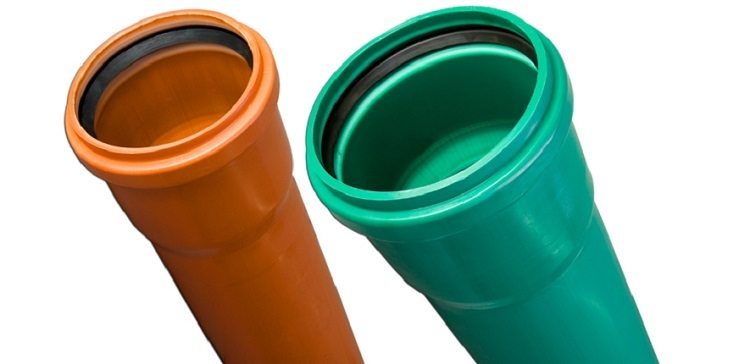
Many types of pipes are available with an extension at the end - a bell, it serves to connect pipes to each other
Installation of outdoor PVC sewer pipes
When laying an external sewage disposal system, it is important to know the permissible depth of the sewer PVC pipe. In addition to the above classification for ring stiffness in units of SN, these products are divided into the following groups:
- group L. Such pipes are able to withstand the load created by the weight of the soil up to 2 kH / m2;
- group N - up to 4 kH / m2;
- group S - up to 8 kH / m2.
The greater the depth, the, accordingly, the greater pressure the PVC pipes must withstand for external sewage. Before purchasing, read the passport for this product. It must have the appropriate marking. It is also important to know the level of soil freezing in your area, it depends on it pipe laying depth and, accordingly, their choice.
Pipe installation must be performed in the following sequence:
- Dig trenches.
- At the bottom, equip a sand cushion 10 cm thick and cover it with the same layer of rubble. After that, carefully tamp.
- The laying of PVC sewer pipes for external sewage must begin from the foundation of the building towards the treatment plant.
- After 15-20 meters along the entire length of the highway revisions are made.
- Connection and insulation of underground sewer pipes require special attention: the tightness of the system and its functioning in cold weather depends on how well these actions are performed;
- Make the first backfill with a layer of sand 10-15 cm thick and ram it on the sides of the pipe (this is not recommended from above).
- After insulation, once again check the angle of the PVC sewer outer pipe. If its value will be the required 2 cm per 1 linear meter, carry out the final backfill using the soil removed earlier from the trench.
Important! When performing these works, it is necessary to observe the bias towards the septic tank. Then drains will not accumulate in the pipeline.
How to choose the size of PVC pipes for domestic sewage
Independent design and construction of an internal sewer system (for example, in a country house) requires the correct selection of pipe diameters. This should be done taking into account the fact that in the marking the manufacturer indicates the value of the external, not internal section of the product. To find out the size of the last parameter, it is necessary to perform the operation of subtracting from the value of the outer diameter twice the thickness of the pipe wall. These data are present in its labeling.
Long-term practice of using PVC pipes for domestic sewage has allowed us to develop an approximate scale that must be followed when choosing the diameters of such products. The key data in creating the scale were the functions assigned to the pipe and its location. The following is a sample of the most common use cases for PVC pipes in home sewers.
- internal wiring in the bathroom and the apartment should be based on PVC pipe rolled with an inner diameter of 40-50 millimeters;
- the internal diameter of the drain from shower cabins, bathtubs and washbasins should be 32 millimeters;
- To drain drains from the dishwasher, you can use a PVC sewer pipe with an inner diameter of 25 millimeters. Some models of dishwasher units require connection through 40 mm taps.
Plumbing PVC pipes will serve you well for more than a dozen years. But so that there is no need for repair, during their installation and subsequent operation it is necessary to be guided by generally accepted rules.
